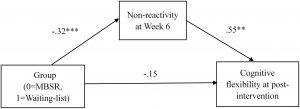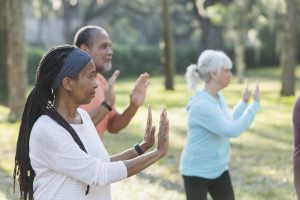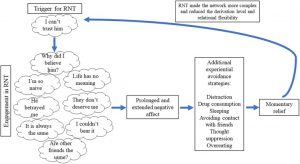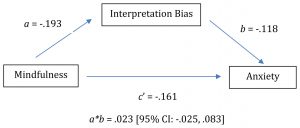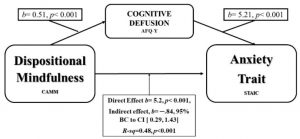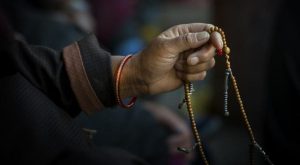Improve Psychological Health with Mindfulness Training in Nature
By John M. de Castro, Ph.D.
“Outdoor meditation is an excellent way to improve mental health, reduce anxiety and lessen stress. The use of nature and outdoor space in meditation has been proven to yield major health benefits. Beyond just the physical impacts of lower blood pressure and other cardiovascular benefits—like what comes along with most exercise—meditation can leave you with an enhanced sense of energy and a better mood.” – EHE Health
Modern living is stressful, perhaps, in part because it has divorced us from the natural world that our species was immersed in throughout its evolutionary history. Modern environments may be damaging to our health and well-being simply because the species did not evolve to cope with them. This suggests that returning to nature, at least occasionally, may be beneficial. Indeed, researchers are beginning to study nature walks or what the Japanese call “Forest Bathing” and their effects on our mental and physical health.
Mindfulness practices have been found routinely to reduce the psychological and physiological responses to stress and improve mood. People have long reported that walking in nature elevates their mood. It appears intuitively obvious that if mindfulness training occurred in a beautiful natural place, it would greatly improve the effectiveness of mindfulness practice. Pictures in the media of meditation almost always show a practitioner meditating in a beautiful natural setting. But there is little systematic research regarding the effects of mindfulness training in nature. It’s possible that the combination might magnify the individual benefits of each.
In today’s Research News article “Mindfulness-Based Restoration Skills Training (ReST) in a Natural Setting Compared to Conventional Mindfulness Training: Psychological Functioning After a Five-Week Course.” (See summary below or view the full text of the study at: https://www.ncbi.nlm.nih.gov/pmc/articles/PMC7438830/) Lymeus and colleagues recruited college students with self-perceived stress and little or no meditation experience. They were randomly assigned to receive either Conventional Mindfulness Training or Restoration Skills Training in weekly 90-minute classes over 5 weeks with daily homework assignments. A no-treatment control group was separately recruited.
Both trainings were modelled after the Mindfulness-Based Stress Reduction (MBSR) program with open monitoring and body scan meditation practices. The Conventional Mindfulness Training was conducted inside in a plain room while the Restoration Skills Training was conducted in a botanical garden both outside and inside in a greenhouse. It also emphasized “exploration of experiences emanating from sensory connection with stimuli in the environment.” The students were measured before and after training for mindfulness, cognitive function, and perceived stress.
They found that in comparison to baseline and the no-treatment control group both the Conventional Mindfulness Training and Restoration Skills Training groups had significant increases in mindfulness and cognitive functions and decreases in perceived stress with medium to large effect sizes. There were no significant differences between the 2 mindfulness training programs.
The present study replicates the findings that have been repeatedly demonstrated in previous research that mindfulness training increases cognitive function and decreases perceived stress. A strength of the present study was that mindfulness training in nature was compared to comparable classical mindfulness training. This allows for a direct assessment of the benefits of training in nature. Although mindfulness training in nature was found to be greatly psychologically beneficial it was not found to be superior to training inside in a plain room.
These results suggest that mindfulness training in nature is a viable and effective practice for the improvement of the well-being of college students. But there was no evidence that the benefits of being in nature supplemented the impact of mindfulness training. It should be noted that there may have been a ceiling effect present where both mindfulness training produced such strong benefits that there was no further room for practicing in nature to further increase the effects.
So, improve psychological health with mindfulness training in nature.
“you don’t have to choose between meditation and taking advantage of nature. Meditating outdoors is a great way to invigorate your practice and keep it going strong.” – Mindworks
CMCS – Center for Mindfulness and Contemplative Studies
This and other Contemplative Studies posts are also available on Google+ https://plus.google.com/106784388191201299496/posts and on Twitter @MindfulResearch
Study Summary
Freddie Lymeus, Marie Ahrling, Josef Apelman, Cecilia de Mander Florin, Cecilia Nilsson, Janina Vincenti, Agnes Zetterberg, Per Lindberg, Terry Hartig. Mindfulness-Based Restoration Skills Training (ReST) in a Natural Setting Compared to Conventional Mindfulness Training: Psychological Functioning After a Five-Week Course. Front Psychol. 2020; 11: 1560. Published online 2020 Aug 12. doi: 10.3389/fpsyg.2020.01560
Abstract
Restoration skills training (ReST) is a mindfulness-based course that draws on restorative nature experience to facilitate the meditation practice and teach widely applicable adaptation skills. Previous studies comparing ReST to conventional mindfulness training (CMT) showed that ReST has important advantages: it supports beginning meditators in connecting with restorative environmental qualities and in meditating with less effort; it restores their attention regulation capabilities; and it helps them complete the course and establish a regular meditation habit. However, mindfulness theory indicates that effortful training may be necessary to achieve generalized improvements in psychological functioning. Therefore, this study tests whether the less effortful and more acceptable ReST approach is attended by any meaningful disadvantage compared to CMT in terms of its effects on central aspects psychological functioning. We analyze data from four rounds of development of the ReST course, in each of which we compared it to a parallel and formally matched CMT course. Randomly assigned participants (total course starters = 152) provided ratings of dispositional mindfulness, cognitive functioning, and chronic stress before and after the 5-week ReST and CMT courses. Round 4 also included a separately recruited passive control condition. ReST and CMT were attended by similar average improvements in the three outcomes, although the effects on chronic stress were inconsistent. Moderate to large improvements in the three outcomes could also be affirmed in contrasts with the passive controls. Using a reliable change index, we saw that over one third of the ReST and CMT participants enjoyed reliably improved psychological functioning. The risk of experiencing deteriorated functioning was no greater with either ReST or CMT than for passive control group participants. None of the contrasts exceeded our stringent criterion for inferiority of ReST compared with CMT. We conclude that ReST is a promising alternative for otherwise healthy people with stress or concentration problems who would be less likely to complete more effortful CMT. By adapting the meditation practices to draw on restorative setting characteristics, ReST can mitigate the demands otherwise incurred in early stages of mindfulness training without compromising the acquisition of widely applicable mindfulness skills.
https://www.ncbi.nlm.nih.gov/pmc/articles/PMC7438830/

